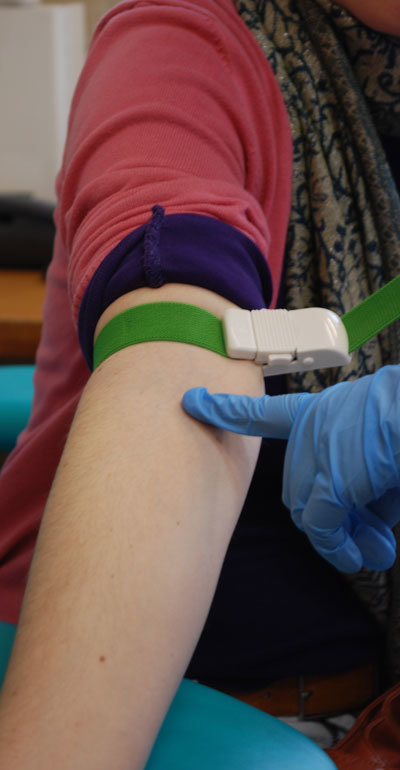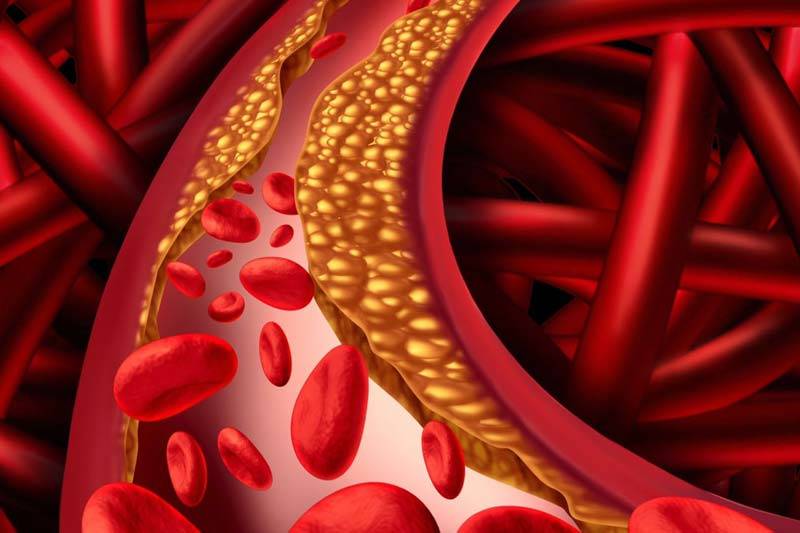Treatments
Progress in developing drugs to treat FH
Producing new drugs is a time-consuming and costly business. A 2014 report from the Tufts Centre for the Study of Drug Development (CSDD) reported in Scientific American calculated that the cost of developing a prescription drug that gains market approval was USD 2.6 billion, a 145% increase, correcting for inflation, over the estimate the centre made in 2003. The report noted the 10 plus years a drug spends in development. CSSD observed that despite intense efforts to improve efficiency in pharmaceutical research and development, higher costs result from the increased complexity of clinical trials, a greater focus on chronic and degenerative diseases and tests for insurers seeking comparative drug effectiveness data – as well as the high cost of unsuccessful drug development projects.
Key double-blind randomised clinical trials that illustrate the time required to develop suitable treatments for patients with FH and related conditions are:
- 4 S study (the Scandinavian Simvastatin Survival Study) – conceived in 1987 – of 4,444 patients after five years – evaluated the effect of adding statin to high risk patients. As reported in medical journals, the patients involved were Patients with angina pectoris or previous myocardial infarction and serum cholesterol 5.5 – 8.0 mmol/L on a lipid-lowering diet were randomised to double-blind treatment with simvastatin or placebo. – Study Results. Until that time drug therapy for hypercholesterolaemia was controversial because there was insufficient clinical trial evidence for improved survival of patients with coronary heart disease. The Study compared effects of simvastatin with placebo.
Outcome: there was a reduction of 35% in LDL cholesterol and a reduced rate of dying. It is considered that this key study changed the medical approach and the approach to cholesterol. Since that time researchers have sought to improve outcomes.
Following the 4S study, people then tried to use more and less powerful statins to see if there was a link - A 2-year comparative study called “Prove It” presented in 2004 looked at intensive treatment with atorvastatin (80mg) compared with pravastatin (40mg) for patients who had been hospitalised within previous 10 days with an ACS (acute coronary syndrome) or high-risk unstable angina who had been stabilised following an event.This study suggested that lowering LDL cholesterol levels substantially below the existing target levels was beneficial.
- The Copenhagen general population study published in 2012 investigated the prevalence of FH and the associations between FH and coronary artery disease and cholesterol-lowering medication. An unselected community-based population of 69,016 participants was studied and the prevalence of FH appeared to be higher than commonly perceived in a general population of white Danish individuals (i.e. 1 in 137), with at least half of subjects not receiving cholesterol-lowering medication. It was concluded that the very high risk of coronary artery disease irrespective of use of medication reflects the extent of under-diagnosis and under-treatment of FH in the community and primary care.
- Study called “Improve It”, for which results were published in 2015, compared the effect on high-risk post ACS patients of using a tablet combining ezetimibe and simvastatin with simvastatin (40mg). Originally, 18,144 high-risk subjects were enrolled. The study showed that ezetimibe has a different way of working. It stops you absorbing intestinal cholesterol.Oxford: Cholesterol trial collaboration – in excess of 70,000 patients’ data in one place. Clear linear benefit in reducing LDL cholesterol.

Key double-blind randomised clinical trials that illustrate the time required to develop suitable treatments for patients with FH and related conditions are:
- 4 S study (the Scandinavian Simvastatin Survival Study) – conceived in 1987 – of 4,444 patients after five years – evaluated the effect of adding statin to high risk patients. As reported in medical journals, the patients involved were Patients with angina pectoris or previous myocardial infarction and serum cholesterol 5.5 – 8.0 mmol/L on a lipid-lowering diet were randomised to double-blind treatment with simvastatin or placebo. – Study Results. Until that time drug therapy for hypercholesterolaemia was controversial because there was insufficient clinical trial evidence for improved survival of patients with coronary heart disease. The Study compared effects of simvastatin with placebo.
Outcome: there was a reduction of 35% in LDL cholesterol and a reduced rate of dying. It is considered that this key study changed the medical approach and the approach to cholesterol. Since that time researchers have sought to improve outcomes.
Following the 4S study, people then tried to use more and less powerful statins to see if there was a link - A 2-year comparative study called “Prove It” presented in 2004 looked at intensive treatment with atorvastatin (80mg) compared with pravastatin (40mg) for patients who had been hospitalised within previous 10 days with an ACS (acute coronary syndrome) or high-risk unstable angina who had been stabilised following an event.This study suggested that lowering LDL cholesterol levels substantially below the existing target levels was beneficial.
- The Copenhagen general population study published in 2012 investigated the prevalence of FH and the associations between FH and coronary artery disease and cholesterol-lowering medication. An unselected community-based population of 69,016 participants was studied and the prevalence of FH appeared to be higher than commonly perceived in a general population of white Danish individuals (i.e. 1 in 137), with at least half of subjects not receiving cholesterol-lowering medication. It was concluded that the very high risk of coronary artery disease irrespective of use of medication reflects the extent of under-diagnosis and under-treatment of FH in the community and primary care.
- Study called “Improve It”, for which results were published in 2015, compared the effect on high-risk post ACS patients of using a tablet combining ezetimibe and simvastatin with simvastatin (40mg). Originally, 18,144 high-risk subjects were enrolled. The study showed that ezetimibe has a different way of working. It stops you absorbing intestinal cholesterol.Oxford: Cholesterol trial collaboration – in excess of 70,000 patients’ data in one place. Clear linear benefit in reducing LDL cholesterol.
General picture
Over the last ten years there has not been much progress. Pharmaceutical researchers have tried to use other methods. It has been noted that three clinical trials were undertaken to look at HDL, but either failed or stopped.
Statins
A category of medicines, called statins, are the primary drugs to lower LDL. Statins are usually well tolerated and considered very safe. A few people have difficulty in taking statins – according to information on the HEART UK website, research has shown that 10-15% of patients treated with a statin show some degree of intolerance, with many people stopping their statin within a year of its prescription.
Statins are not, however, suitable for women who are trying to conceive, who are pregnant or breastfeeding (as with all the drugs as there is no safety data available. The possible exception is bile acids which do not get absorbed). Statins are not routinely prescribed for young children, but are licensed for use in children under care of a paediatric specialist.
For a very small number of patients with high cholesterol, statins are not effective. According to research, in patients with familial hypercholesterolaemia (FH), high intensity statins can reduce LDL cholesterol by only 50% at maximum and in general monotherapy with statins is not usually sufficient to get a FH patient to goal.
The HEART UK website offers a helpful list of questions on statins treatments: – https://heartuk.org.uk/statins-and-treatments/statin-side-effects/the-statin-conundrum
Ezetimibe
This is another medicine used to lower LDL cholesterol. It is a medication that blocks the absorption of cholesterol from food and bile juices in your intestines into your blood. Ezetimibe monotherapy is recommended as an option for treating primary (heterozygous-familial or non-familial) hypercholesterolaemia in adults who cannot tolerate statin therapy. Ezetimibe taken on its own rarely causes side effects. In certain cases ezetimibe is co-administered with initial statin therapy when serum total or low-density lipoprotein (LDL) cholesterol concentration is not appropriately controlled. The side effects of the combined statin and ezetimibe treatment are generally the same as those of the statin on its own (muscle pain and stomach problems).
Bile acid sequestrants
These medicines are used to lower LDL cholesterol
Lomitapide
This type of medication can be used to treat homozygous familial hypercholesterolaemia. It is termed a ‘microsomal triglyceride transfer protein (MTP) inhibitor’. In other words, it limits the amount of cholesterol that your liver makes, so that your body has less cholesterol to remove from the blood stream. The commercial name for lomitapide is Juxtapid in the US and Lojuxta in the EU. At present this medication is very expensive and requires strict adherence to a low fat diet as it may cause fat build-up in liver, leading to fatty liver.
Mipomersen
Mipomersen sodium is a cholesterol-lowering drug for use as an adjunct to diet and drug therapy in patients with homozygous hypercholesterolaemia. Clinical studies with the drug found that it raised liver enzymes and led to an accumulation of fat in the liver. This drug is available in the United States, but in 2012 the Committee for Medicinal Products for Human Use (CHMP) of the European Medicines Agency recommended refusal of marketing authorisation, based on side effects of this drug.
Lipoprotein apheresis
Lipoprotein apheresis is a medical therapy which may be used for patients who are not able to meet their LDL cholesterol goal with medicines and lifestyle changes. Apo B-containing lipoproteins (LDL, vLDL and Lp(a)) are physically removed from the blood. Following a filtration process, the newly filtered blood, with a much lower LDL level, is returned. Medical professionals monitor patients during the procedure, which takes two to three hours. The treatment is generally performed every second week. Lipoprotein apheresis is most commonly used to treat patients with FH, but is also often used for other hyperlipidaemia patients, including those with elevated Lp(a), to limit and/or reverse the atherosclerotic complications of high cholesterol.
Latest developments:
PCSK9i
The development of this treatment reflects the role of medical genetics, the branch of medicine which involves the diagnosis and management of hereditary disorders. The PCSK9 (full name “proproptein convertase substilisin/kexin type 9) gene provides instructions for making a protein that helps regulate the amount of cholesterol in the bloodstream. The PCSK9 protein appears to control the number of low-density lipoprotein (LDL) receptors, which are proteins on the surface of cells. The LDL receptor (LDLR) is found on the surface of the liver and plays a critical role in regulating LDL cholesterol levels in the circulation. The receptors bind to particles called (LDLs) which are the primary carriers of cholesterol in the blood and they help remove them. The fewer receptors there are, the less able the liver is to keep blood cholesterol low.
Studies have shown that some people have a great deal of PCSK9 protein and that when it is more abundant and active, it leads to life-long high cholesterol and early heart disease.
A new class of medications called PCSK9 inhibitors (referred to as PCSK9i) target the PCSK9 protein making it less effective at breaking down the LDL receptors. This means that there are then more working receptors on the surface of liver cells and more cholesterol can be removed from the blood. The PCSK9 inhibitors that have now been developed are called ‘monoclonal antibodies’ and they are produced in medical laboratories under strict controls. Each monoclonal antibody can recognise just one particular protein. The monoclonal antibodies recognise and attach to specific proteins produced by the cells in one’s body. The abbreviation for monoclonal antibody is ‘mab’ and so PCSK9i drugs all end in the three letters ‘mab’. Evolocumab and Alirocumab are licensed in the United Kingdom for example, but are not yet available in all European countries.
This type of drug cannot be taken orally – PCSK9 Inhibitors are given as injections under the skin every 2 to 4 weeks.
Volanesorsen’ using ‘antisense technology’
In August 2017, American pharmaceutical company ‘Akcea Therapeutics’ an affiliate of Ionis Pharmaceuticals, Inc., submitted a New Drug Application to the American Federal Drug Association (FDA) for a drug it has developed called ‘volanesorsen’. Various clinical trials have taken place with the aim of developing treatment of Familial Chylomicronaemia Syndrome (FCS) and Familial Partial Lipodystrophy (FPL).
FCS is an inherited metabolic disorder that causes a build-up of triglycerides (fats) in the blood: this can increase the risk of severe abdominal pain and potentially fatal attacks of pancreatitis. Due to a deficiency in lipoprotein lipase, an enzyme that helps to break down triglycerides, people who have FCS are unable to effectively metabolise large, triglyceride-rich lipid particles called chylomicrons. This genetic condition is also sometimes known as lipoprotein lipase deficiency (LPLD), Fredrickson Type 1 hyperlipoproteinemia and familial hypertriglyceridemia.
Familial partial lipodystrophy (FPL) is a severe, rare genetic metabolic disorder which results in high levels of triglycerides in the bloodstream, abnormal fat distribution around and within organs, such as the liver and heart and a range of metabolic anbnormalities, including severe insulin resistance. In addition to an increased risk of pancreatitis, other long-term, progressive manifestations such as premature cardiomyopathy, atherosclerosis and liver disease may occur.
Volanesorsen uses Ionis’ ‘antisense technology’, a technique described by academic researchers a decade ago as “a potentially powerful therapeutic tool for gene targeting and/or expression regulation”. Volanesorson is designed to reduce the production of ApoC-III, a protein produced in the liver that plays a central role in the regulation of plasma triglycerides and may also affect other metabolic parameters.



FH Europe is supported by an educational grant from Amgen Limited, Sanofi, Regeneron, Akcea Therapeutics Inc. and Amryt
Site by: Vovi Web Design

